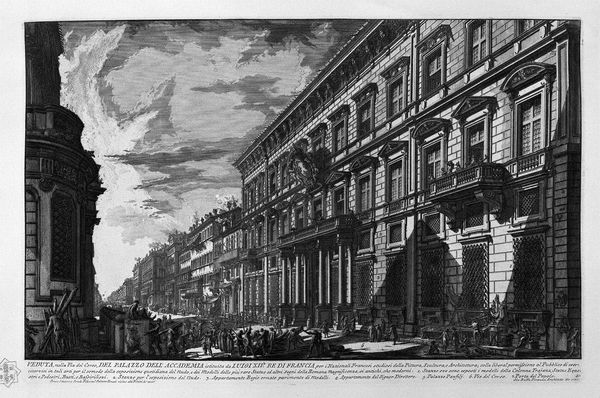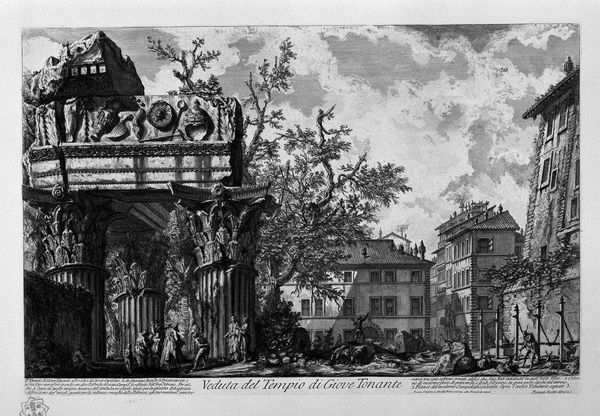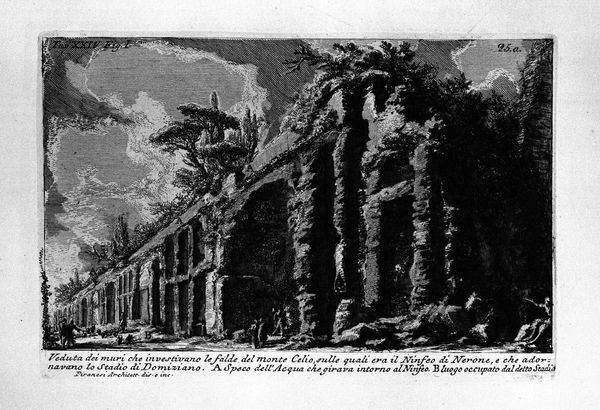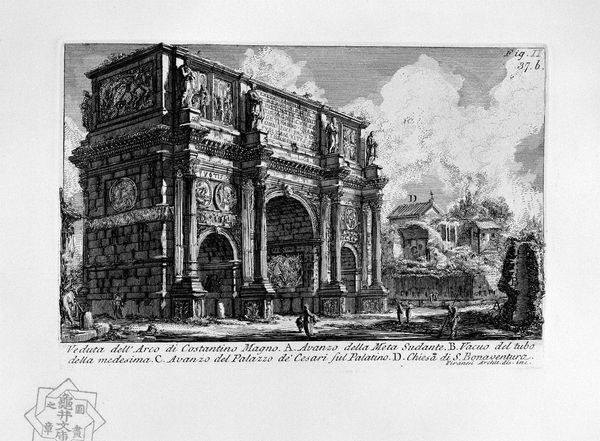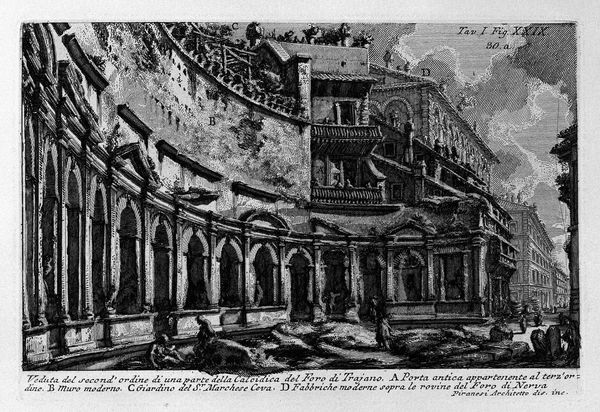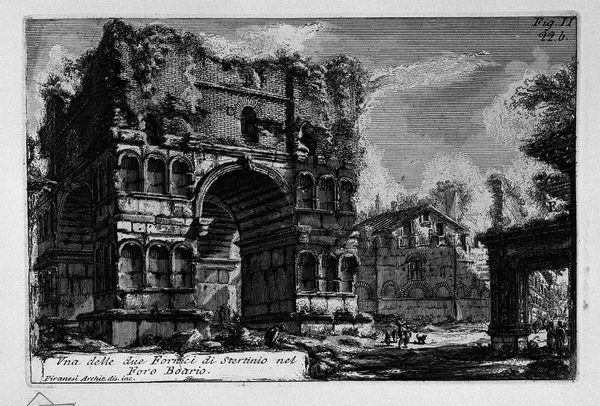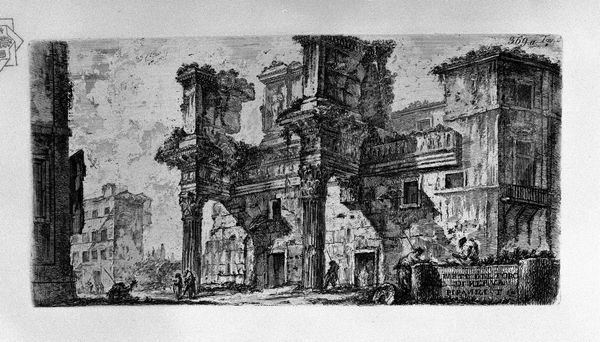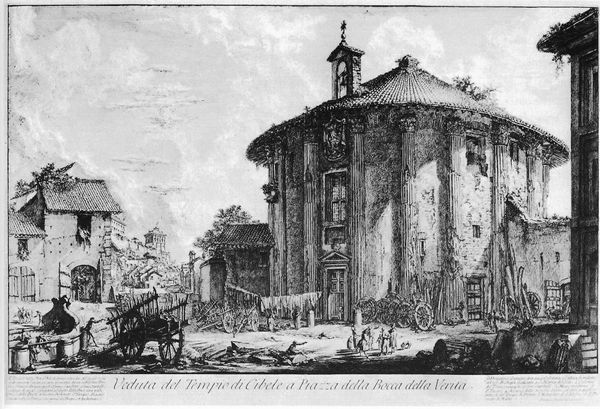
drawing, print, etching, architecture
drawing
neoclassicism
etching
landscape
ancient-mediterranean
history-painting
architecture
building
monochrome
Copyright: Public domain
Curator: This etching, titled "The Roman Antiquities, Plate XX. Casa dei Crescenzi" was created by Giovanni Battista Piranesi in 1756. Editor: It's incredibly atmospheric, isn’t it? The stark contrasts of light and shadow lend a dramatic, almost theatrical air to the architectural ruins. Curator: Absolutely. Piranesi, a master of neoclassicism, uses etching to meticulously render the textures and forms. Observe the emphasis on line and form – the architecture itself is almost a character, monumental yet decaying. Editor: It strikes me as commentary on the passage of time and the impermanence of even the grandest human creations. It begs the question of how we build on and rebuild our histories. Was this commissioned for public works, or perhaps intended as a symbolic gesture? Curator: More likely a symbolic gesture, a historical record for posterity's sake. Piranesi was deeply interested in conveying the grandeur of Roman antiquity through careful visual documentation and dissemination of imagery. The choice of monochrome further accentuates the timeless quality. This piece reflects a larger movement of that era, the resurfacing interest and revivalism of the antique. Editor: It does make one reflect on that revival and, I might add, the inherent political and cultural implications in reclaiming that narrative through images such as these. How would something like this have been circulated or encountered? Curator: The printing process allowed Piranesi's work to reach a wider audience of academics and enthusiasts across Europe. He very shrewdly used the public's hunger for relics of this style. He was marketing both imagery and style as a unified statement. Editor: That is an interesting intersection. Style became substance, packaged by and sold by an entrepreneur as cultural iconography, fascinating. Thank you for bringing the many layers to the fore. Curator: A true pleasure. Piranesi's work offers a compelling example of how artistic vision can shape and transform historical narratives.
Comments
No comments
Be the first to comment and join the conversation on the ultimate creative platform.




